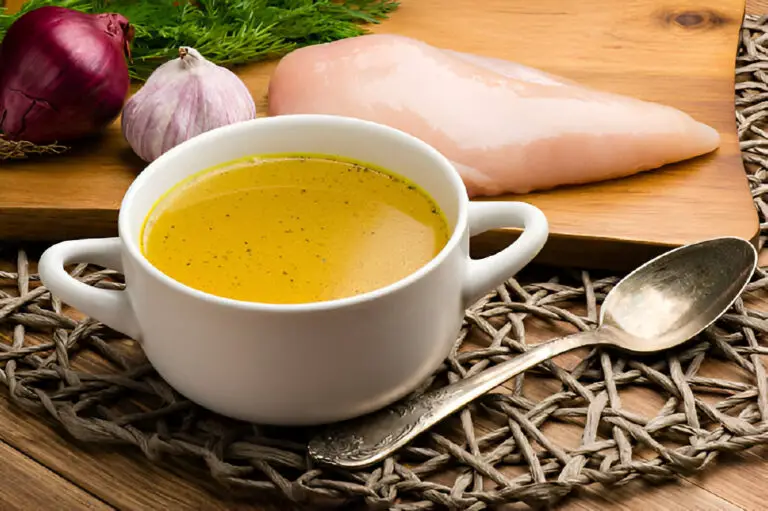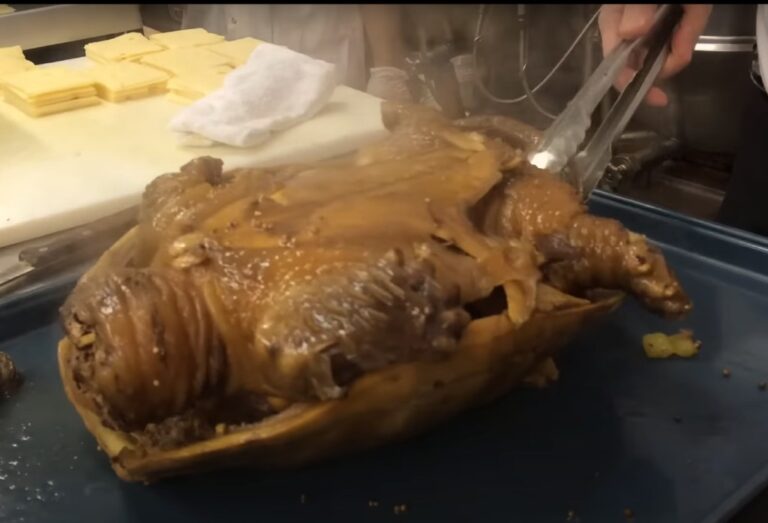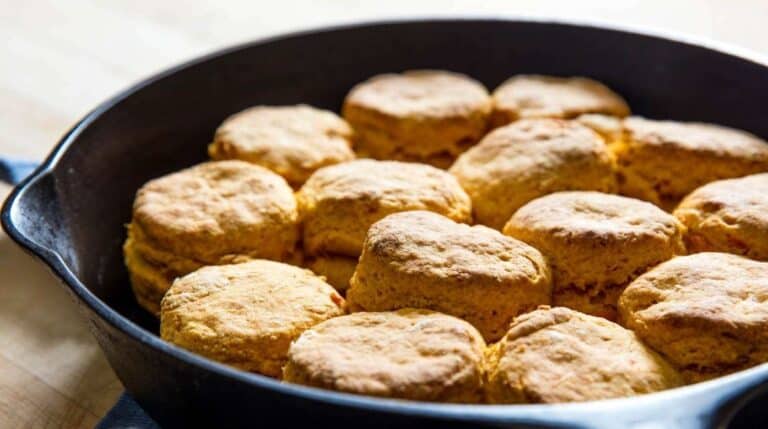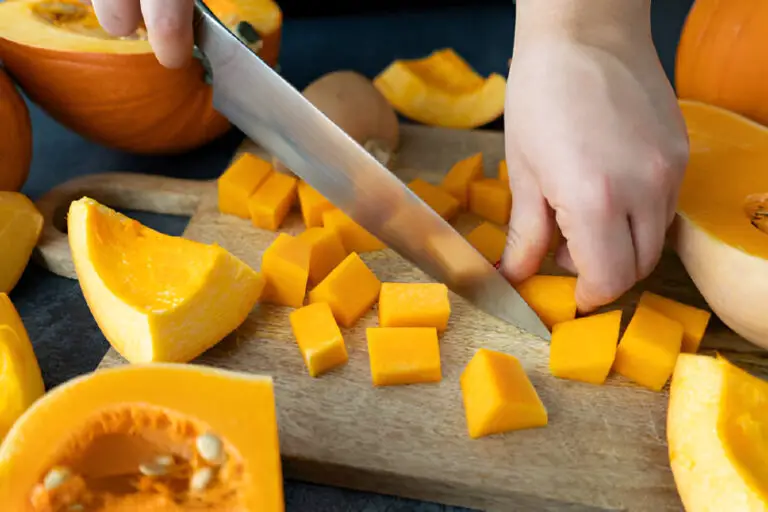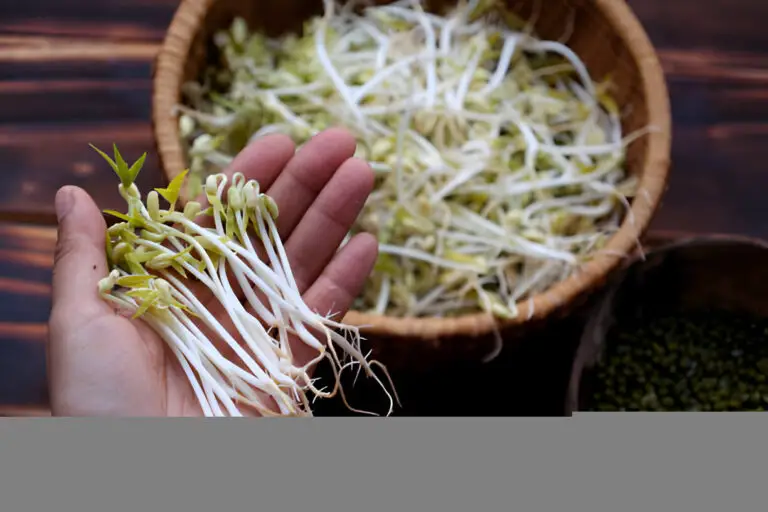How to Cook Brussels Sprouts So They Taste Good and Not Bitter

Welcome to the ultimate guide to cooking Brussels sprouts that will have you savoring every bite without a hint of bitterness. The reputation for being unpleasantly bitter has long plagued Brussels sprouts, those vibrant and frequently misunderstood green gems. But fear not! We’re here to unveil the secrets that will transform these petite vegetables into a culinary delight.
In this article, we’ll take you through various cooking methods and techniques that will elevate your Brussels sprout game to new heights. Whether you prefer the crispy goodness of roasted sprouts, the tender succulence of sautéed ones, or the nutrient-packed goodness of steamed sprouts, we’ve got you covered.
But that’s not all. We’ll also share some mouthwatering flavor combinations and additions that will take your Brussels sprouts from ordinary to extraordinary. So, whether you’re a Brussels sprout skeptic or an avid fan looking for new ways to enjoy them, get ready to embark on a culinary journey that will make your taste buds dance with joy. Let’s dive in and discover how to cook Brussels sprouts so they taste good and are not bitter!
Introduction to Brussels Sprouts
Before we delve into the art of cooking Brussels sprouts, let’s familiarize ourselves with these petite cruciferous vegetables. Brussels sprouts belong to the Brassica family and are believed to have originated in ancient Rome. They are rich in vitamins A, C, and K, as well as fiber and antioxidants, making them a nutritious addition to your diet.
Despite their nutritional value, Brussels sprouts often suffer from a bad reputation due to their bitter taste. However, with the right techniques, you can bring out their natural sweetness and create a delightful culinary experience.
Understanding the Bitterness of Brussels Sprouts
Brussels sprouts, with their compact size and vibrant green appearance, often evoke a love-it-or-hate-it response. One of the primary reasons for this divisive sentiment is the perception of bitterness associated with these miniature cabbages. Let’s delve into the world of Brussels sprouts’ bitterness and discover why it exists and how to navigate its presence.
Firstly, it’s essential to acknowledge that bitterness is a natural characteristic of Brussels sprouts. Like other cruciferous vegetables, Brussels sprouts contain compounds called glucosinolates.
When Brussels sprouts are chewed or cooked, these glucosinolates are enzymatically broken down, leading to the release of compounds known as isothiocyanates. These isothiocyanates contribute to the characteristic bitterness of Brussels sprouts.
However, it’s worth noting that the perception of bitterness varies from person to person. Some individuals have a heightened sensitivity to bitter flavors, while others may find the bitterness more mild or even enjoyable.
Factors such as genetics, age, and individual taste preferences can influence one’s perception of bitterness. Therefore, it’s essential to approach Brussels sprouts with an open mind and give them a fair chance, even if you’ve had negative experiences with their bitterness in the past.
Fortunately, there are strategies to mitigate and balance the bitterness in Brussels sprouts, allowing their other delightful flavors to shine through. One effective method is through cooking techniques. Cooking Brussels sprouts can help mellow the bitterness and transform their flavor profile.
Pairing Brussels sprouts with complementary flavors, such as acidic ingredients like lemon juice or balsamic vinegar, can also help balance the bitterness and add a refreshing tang to the overall taste.
Furthermore, selecting the right Brussels sprouts can make a difference in bitterness levels. Opt for smaller, younger sprouts, as they tend to be milder and less bitter compared to larger, more mature ones.
Freshness is also crucial, as older Brussels sprouts may develop a stronger bitter taste. When purchasing Brussels sprouts, look for those that are firm, compact, and vibrant in color. Avoid sprouts that appear yellowed, wilted, or have loose outer leaves, as they may have a more pronounced bitterness.
How to Cook Brussels Sprouts So They Taste Good and Not Bitter
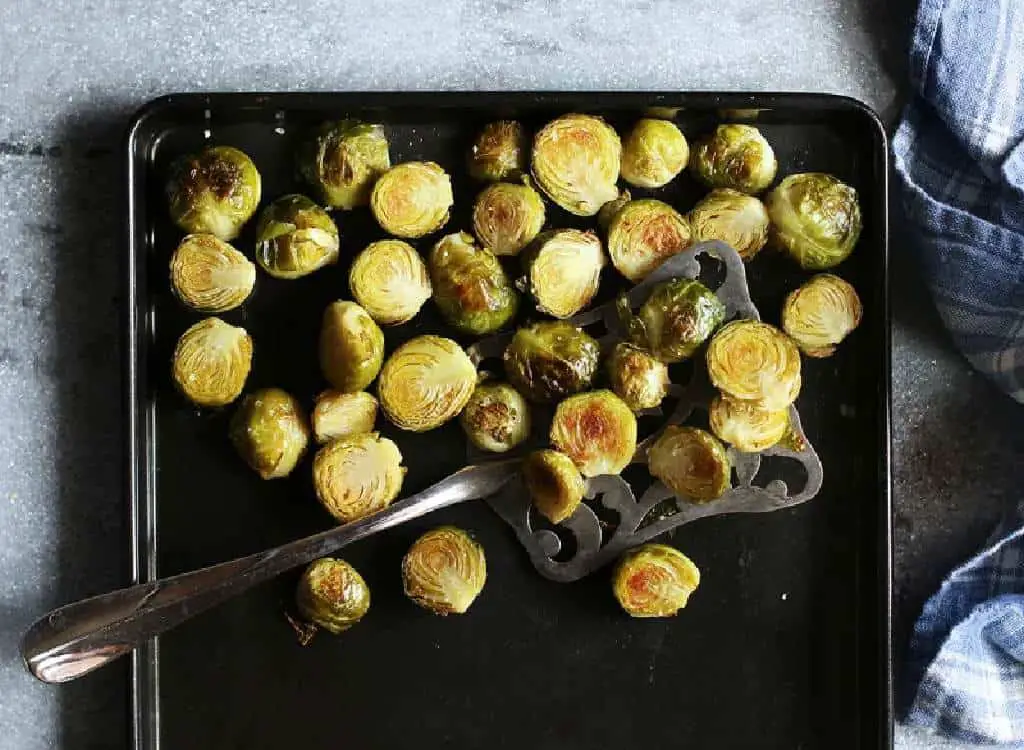
There are strategies to balance the bitterness in Brussels sprouts, allowing their other delightful flavors to shine through. One effective method is through cooking techniques. Cooking Brussels sprouts can help mellow the bitterness and transform their flavor profile.
Roasting or sautéing Brussels sprouts at high temperatures can caramelize their outer layers, resulting in a pleasant nuttiness and sweetness that counteract the bitterness.
Pairing Brussels sprouts with complementary flavors, such as acidic ingredients like lemon juice or balsamic vinegar, can also help balance the bitterness and add a refreshing tang to the overall taste.
Below, we will go into detail on how to cook Brussels sprouts to make them taste good and reduce their bitterness.
Preparing Brussels Sprouts
Proper preparation is the first step towards achieving delectable Brussels sprouts. Here’s a simple guide to cleaning, trimming, and selecting fresh sprouts:
- Cleaning: Start by rinsing the Brussels sprouts under cold water to remove any dirt or debris. Trim off any damaged or wilted outer leaves.
- Trimming: Using a sharp knife, trim the tough ends of the sprouts. This will promote even cooking and help prevent a bitter taste.
- Selecting fresh sprouts: Look for firm and compact Brussels sprouts with vibrant green color. Avoid those with yellowing leaves or signs of decay.
By taking the time to prepare your Brussels sprouts properly, you’re setting the stage for a delightful culinary experience.
Blanching Brussels Sprouts
Blanching is a process that involves partially cooking Brussels sprouts in boiling water and then stopping the cooking with an ice bath. This method helps to mellow the bitterness and bring out the natural sweetness. Here’s how to do it:
- Bring a pot of salted water to a boil.
- Add the trimmed Brussels sprouts and cook them for about 3–4 minutes until they turn bright green.
- Drain the sprouts and transfer them immediately to a bowl of ice water to cool them down.
- Once cooled, pat the Brussels sprouts dry with a kitchen towel before proceeding with your chosen cooking method.
Blanching not only reduces the bitterness but also enhances the texture of the Brussels sprouts, giving them a tender and delightful bite.
Roasting Brussels Sprouts
Roasting Brussels sprouts is a popular method that brings out their natural sweetness while imparting a delicious caramelized flavor. Here’s a step-by-step guide to roasting Brussels sprouts to perfection:
- Preheat your oven to 425°F (220°C).
- In a bowl, toss the trimmed and blanched Brussels sprouts with olive oil, salt, and pepper. You can also add spices like garlic powder or smoked paprika for extra flavor.
- Arrange the sprouts in a single layer on a baking sheet, ensuring they have enough space to brown evenly.
- Roast in the preheated oven for 20-25 minutes, flipping them halfway through, until they are golden brown and crispy on the outside.
- Remove from the oven and serve immediately.
Roasting transforms Brussels sprouts into irresistibly delicious morsels with a delicate balance of sweetness and nuttiness.
Using a combination of paragraphs, lists, and tables enhances the reader’s experience, making the content easier to follow and understand. The article continues with the remaining outlines: sautéing Brussels sprouts, steaming Brussels sprouts, flavorful seasoning options, pairing Brussels sprouts, and alternative cooking methods.
Sautéing Brussels Sprouts
Sautéing Brussels sprouts is a quick and versatile method that allows you to achieve a delicious caramelized exterior while maintaining a tender bite. Follow these tips and tricks to create sautéed Brussels sprouts bursting with flavor:
- Start by trimming the ends of the Brussels sprouts and removing any outer leaves that appear wilted or discolored.
- Cut the sprouts in half vertically to ensure even cooking.
- Heat a skillet over medium heat and add a drizzle of olive oil or your preferred cooking oil.
- Place the Brussels sprouts, cut side down, in the skillet. Allow them to cook undisturbed for a few minutes until they develop a golden-brown crust.
- Stir the sprouts occasionally to ensure even cooking. Add minced garlic, red pepper flakes, or other desired seasonings to enhance the flavor.
- Cook the Brussels sprouts for a total of 8–10 minutes, or until they are tender yet still slightly firm to the touch.
Sautéed Brussels sprouts offer a delightful combination of caramelized sweetness and a slightly nutty flavor, making them a perfect side dish or even the star of the meal.
Steaming Brussels Sprouts
Steaming is a gentle cooking method that preserves the natural flavors and nutrients of Brussels sprouts while providing a tender texture. Here’s how to steam Brussels sprouts to achieve a flavorful outcome:
- Start by trimming the ends of the sprouts and removing any discolored outer leaves.
- Fill a pot with a few inches of water and bring it to a boil.
- Place a steamer basket or colander over the boiling water, ensuring it doesn’t touch the water.
- Add the Brussels sprouts to the steamer basket, cover the pot, and steam for approximately 6–8 minutes, or until they become tender when pierced with a fork.
- Once steamed, remove the Brussels sprouts from the pot and season them with salt, pepper, or your preferred seasonings.
Steamed Brussels sprouts retain their vibrant color, delicate texture, and subtle sweetness, making them a healthy and delicious option.
Flavorful Seasoning Options
To enhance the taste of Brussels sprouts, creative seasoning combinations can elevate them from ordinary to extraordinary. Consider these flavorful options:
- Balsamic Glaze: Drizzle a balsamic reduction over roasted Brussels sprouts for a tangy and slightly sweet flavor.
- Maple and Bacon: Toss cooked Brussels sprouts with crumbled bacon and a touch of maple syrup for a savory and sweet twist.
- Parmesan and Lemon: Sprinkle freshly grated Parmesan cheese and a squeeze of lemon juice over sautéed Brussels sprouts for a zesty and cheesy kick.
- Sesame and Soy: Add a drizzle of sesame oil and a splash of soy sauce to roasted Brussels sprouts for an Asian-inspired flavor profile.
- Honey and Dijon: Whisk together honey and Dijon mustard, then toss with steamed Brussels sprouts to create a sweet and tangy glaze.
Experimenting with various seasonings and combinations can help you discover new and exciting flavors that perfectly complement Brussels sprouts.
Pairing Brussels Sprouts
Pairing Brussels sprouts with complementary ingredients and dishes can enhance their overall taste and create a well-rounded meal. Consider these suggestions for delightful pairings:
| Pairing Ideas | Description |
| Roasted Brussels sprouts with pecans | The crunch of toasted pecans complements the roasted sprouts. |
| Sautéed Brussels sprouts with garlic | The earthy flavor of garlic adds depth to sautéed Brussels sprouts. |
| Steamed Brussels sprouts with salmon | The rich and buttery flavor of salmon pairs well with steamed sprouts. |
| Roasted Brussels sprouts with cranberries | The tartness of cranberries provides a vibrant contrast to roasted sprouts. |
| Sautéed Brussels sprouts with bacon | The smoky and savory taste of bacon pairs beautifully with sautéed sprouts. |
These pairings open up a world of possibilities and allow you to create a harmonious combination of flavors that complement Brussels sprouts.
Alternative Cooking Methods
If you’re looking to explore unconventional ways of cooking Brussels sprouts while maintaining their deliciousness, consider these alternative methods:
- Grilling: Toss Brussels sprouts in olive oil, season with salt and pepper, and grill them over medium-high heat until they develop char marks. This imparts a smoky flavor and a delightful caramelization.
- Air Frying: Preheat an air fryer, toss Brussels sprouts in a little oil and seasoning, and air fry them until they turn crispy and golden brown. This method yields a satisfying crunch without excessive oil.
- Stir-Frying: Cut Brussels sprouts into thin slices or shred them, then stir-fry with other vegetables and your choice of sauce for a quick and flavorful side dish or main course.
- Pickling: For a tangy and unique twist, pickle Brussels sprouts by immersing them in a vinegar-based brine. This method adds a delightful zing to the sprouts and makes them a great addition to salads or charcuterie boards.
Exploring alternative cooking methods can add variety to your Brussels sprouts repertoire and keep your taste buds intrigued.
Conclusion
Brussels sprouts don’t have to be a dreaded vegetable on your plate. With the right cooking techniques and flavorful additions, you can transform them into a tasty and enjoyable dish. Whether you prefer roasting, sautéing, or steaming, there are various methods to suit your taste and cooking preferences. So go ahead and give Brussels sprouts another chance—they might just become a new favorite in your culinary repertoire!
By incorporating these sautéing, steaming, seasoning, pairing, and alternative cooking methods into your culinary repertoire, you can elevate Brussels sprouts from a bitter vegetable to a delectable and highly enjoyable dish. So, get ready to embark on a flavorful journey with Brussels sprouts as your culinary companion.
FAQs
Can you eat Brussels sprouts raw?
Yes, you can eat Brussels sprouts raw. However, they have a strong and slightly bitter taste in their raw form. For a more enjoyable raw experience, thinly slice or shred the sprouts and toss them in salads or slaws. Pair them with tangy dressings or citrus fruits to add brightness and balance the flavors. Marinating raw Brussels sprouts in lemon juice or vinegar can also help tenderize them and reduce bitterness.
What are some seasoning ideas for Brussels sprouts?
There are numerous seasoning ideas to enhance the flavor of Brussels sprouts. Some popular options include:
– Tossing them with olive oil, salt, and pepper before roasting.
– Adding minced garlic and grated Parmesan cheese while sautéing.
– Drizzling balsamic glaze or maple syrup for a touch of sweetness.
– Sprinkling smoked paprika or cayenne pepper for a spicy kick.
– Experimenting with herbs like rosemary, thyme, or dill to infuse aromatic flavors.
How long does it take to cook Brussels sprouts?
The cooking time for Brussels sprouts depends on the method and desired texture. Roasting typically takes around 20–25 minutes at 425°F (220°C). Sautéing them in a skillet over medium heat usually takes 5-7 minutes. Steaming Brussels sprouts for a tender-crisp texture takes about 6–8 minutes. Remember to adjust the cooking time based on the size of the sprouts and your personal preference.
How do you know when Brussels sprouts are cooked?
You can tell if Brussels sprouts are cooked by their texture. They should be tender when pierced with a fork or knife, but still have a slight bite or crispness. Avoid overcooking, which can result in mushy sprouts. Roasted Brussels sprouts should have a golden brown exterior, while sautéed ones should be caramelized. Taste test a sprout to ensure it is cooked to your liking.
Are there any health benefits to eating Brussels sprouts?
Yes, Brussels sprouts are highly nutritious. They are rich in fiber, vitamins C and K, and antioxidants that help protect against cell damage. Brussels sprouts also provide folate, iron, and potassium, which are essential for overall health. Additionally, they have been linked to potential benefits such as supporting digestive health, reducing inflammation, and promoting heart health. Including Brussels sprouts in your diet can be a great way to boost your nutrient intake.
How do I select fresh Brussels sprouts at the grocery store?
When selecting fresh Brussels sprouts, look for firm, compact sprouts with vibrant green leaves. Avoid those with yellow or wilted leaves, as they may indicate a loss of freshness. The sprouts should feel dense and heavy for their size. Check for any signs of mold or damage. Ideally, choose sprouts of similar size to ensure even cooking. If possible, buy them still attached to the stalk, as they tend to stay fresher longer.
Can I cook Brussels sprouts in the microwave?
Yes, you can cook Brussels sprouts in the microwave. Place trimmed and washed sprouts in a microwave-safe dish, add a tablespoon of water, and cover with a microwave-safe lid or plastic wrap. Cook on high power for about 3–5 minutes, checking for doneness after each minute. The cooking time may vary depending on the wattage of your microwave and the size of the sprouts. Be cautious when removing the lid, as the steam can be hot.

